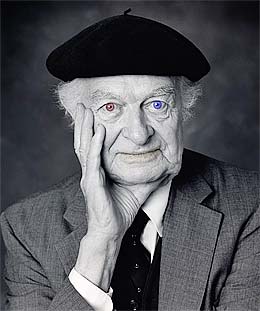|
Linus Carl Pauling, an American chemist, peace activist, author
and educator was of the greatest and most prominent chemists to
have ever lived in the 20th Century. He was the first of a few
scientists who made significant contributions to quantum chemistry
and molecular biology. Pauling remains the only person to receive
the Nobel price for both Physics and Chemistry.

Linus Pauling |
|
Linus Pauling was born to Herman Henry William Pauling and Lucy
Isabelle Darling on 28th February, 1901 in Portland, Oregon. His
father died when he was about 9-years-old and he was left under
the custody of his mother, Lucy. As a child, Linus was interested
in reading a lot of books. He was so taken up by chemistry that
he started a small laboratory with his friend and offered to butterfat
samplings at a low cost. But they did not flourish in this business
and so had to close it down.
Pauling had to go through a lot of problems during his teenage
years. He was denied a high school diploma because he did not
have enough money to pursue his education. So he started doing
odd jobs and earning himself the money he required to continue
his education.
He rejoined his school using the money he had saved up. He went
on to pursue graduation in the field of chemical engineering and
later joined the California Institute of Technology to further
enhance his knowledge. Pauling researched the crystal structure
of minerals and published seven papers on them. This earned him
a Ph.D in Physical Chemistry and Mathematical Physics.
While Studying at Oregon State University he was fascinated by
Quantum theory and Quantum mechanics. Pauling was given an opportunity
to study under the guidance of three eminent scientists - German
physicist Arnold Sommerfeld in Munich, Danish physicist Niels
Bohr in Copenhagen, and Austrian physicist Erwin Schrödinger
in Zurich.
This opportunity helped him to acquire much knowledge in quantum
mechanics and he decided to study about the use of quantum mechanics
in determining the atomic structure of atoms and molecules. Linus
Pauling became an integral part of the professional chemistry
fraternity, Alpha Chi Sigma.
His continuous research on atomic structure of crystals helped
him to postulate five important rules known as Pauling's rules.
He introduced the concept of hybridization of atomic orbitals
and the tetravalency of the carbon atom in one his papers which
was considered as the most important of his findings. He was awarded
the Langmuir prize for his contributions in 1931.
During one of his trips to Europe, Pauling learned about diffraction
using electrons. This inspired him to build an electron diffraction
instrument that he used to observe the molecular structure of
different chemical substances. He put forth the concept of electronegativity
in 1932 and introduced the Pauling Electronegativity Scale, a
scale used in identifying the nature of atomic or molecular bonds.
Pauling also carried out much research and introduced new concepts
and ideas in the field of molecular biology, molecular genetics,
molecular medicine and medical research.
But it was his research in identifying the nature of chemical
bonds that got him the Nobel Prize in Chemistry in 1954. His book
"The Nature of The Chemical Bond" continues to be one
of the most important and much sought after text books even today.
Apart from this he has also found out new concepts in the field
of organic and inorganic chemistry. Pauling passed away on August
19th 1994 due to prostrate cancer. His name was included among
20 other scientists who were the most influential ones that ever
lived. His diverse interests and contributions to different fields
have made him one of the most notable figures that ever lived
in the 20th century.
Rumor has it …
Linus Pauling was said to have been abducted by aliens and used
for certain unsavory sphincter probe experiments in which he had
to "bah" like a sheep in order to be released. When
giving his speech after receiving the Nobel Prize Pauling is said
to have bah'ed several times repeatedly because of mini episodes
of PTSD.
Written by Kevin Lepton
|

